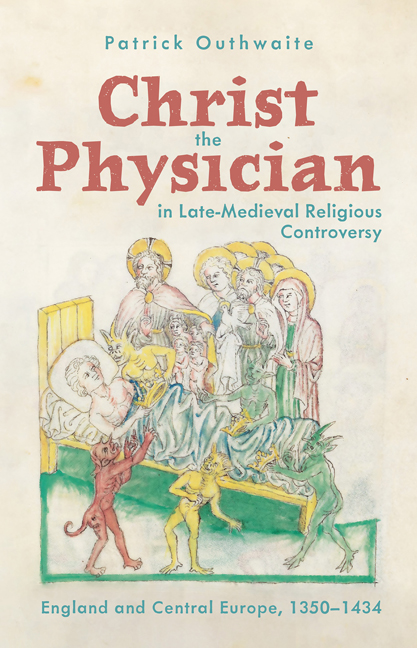Book contents
- Frontmatter
- Dedication
- Contents
- List of Illustrations
- Acknowledgements
- List of Abbreviations
- Introduction: The Christus medicus Tradition
- 1 The Virgin Mary as Nurse, Medicine and Mother: Devotional Texts and Hospitals
- 2 Sacramental Medicine and Frequent Communion from Prague to Kraków
- 3 Disenfranchised Surgeons: Christus chirurgus and Wycliffite Preaching in England
- 4 The Diseased Ecclesia from Jan Hus’s Exile to the Council of Basel
- 5 Responses to Heresy at the Councils of Constance and Basel
- Afterword
- Bibliography
- Index
- Miscellaneous Endmatter
Afterword
Published online by Cambridge University Press: 09 May 2024
- Frontmatter
- Dedication
- Contents
- List of Illustrations
- Acknowledgements
- List of Abbreviations
- Introduction: The Christus medicus Tradition
- 1 The Virgin Mary as Nurse, Medicine and Mother: Devotional Texts and Hospitals
- 2 Sacramental Medicine and Frequent Communion from Prague to Kraków
- 3 Disenfranchised Surgeons: Christus chirurgus and Wycliffite Preaching in England
- 4 The Diseased Ecclesia from Jan Hus’s Exile to the Council of Basel
- 5 Responses to Heresy at the Councils of Constance and Basel
- Afterword
- Bibliography
- Index
- Miscellaneous Endmatter
Summary
The human race is afflicted not by bodily illness, but by sin. The giant patient lies stretched out over the whole world from east to west. The Almighty Physician came down to cure the giant patient. He humbled himself to mortal flesh, even to the bed of the patient. He gives wholesome prescriptions and is disdained, but those who listen are freed.
This study began with St Augustine's image of a giant patient lying across the entire world waiting for Christus medicus to attend to him. During the Great Western Schism, a time when multiple dissident movements emerged, the image must have seemed more fitting than ever. Not only did the Church have to deal with an unprecedented crisis at its head with multiple popes competing for control, but dissidents from England and Bohemia were threatening the principles on which the laity and lower clergy engaged with Scripture, preaching and the sacraments. By the time that the Council of Constance met, the disease and injuries caused to the body of the Church were especially overbearing for those that sought a resolution to the Schism. The invocations of the Divine Physician were intensified at this council and later at Basel, where Christ was invoked both to sever heretics and to return his body of the Church to health.
But the story did not begin with dissidence. Within hospitals for the sick poor, Mary the divine nurse was a model of care and protection for nuns and canonesses to emulate. Her portrayal in devotional texts encouraged new ways for the nurses to treat their patients’ physical and spiritual needs. At least, this was the ideal of those that campaigned for hospital reform. The reality was far less idyllic, as hospitals throughout Europe suffered from a lack of funding and chronic mismanagement. Some reforms resulted in the establishment of genuinely charitable institutions, but most hospitals remained run down and neglected. Still, the charitable mission of the nursing canonesses in Leicester was one example among many of an ideal attitude to hospital care and devotion. These nurses and the devotional texts written for hospital audiences were not intentionally seeking to align themselves with grass-roots religious movements or to open up new ways of engaging with religious practices in society more generally.
- Type
- Chapter
- Information
- Christ the Physician in Late-Medieval Religious ControversyEngland and Central Europe, 1350-1434, pp. 227 - 232Publisher: Boydell & BrewerPrint publication year: 2024



